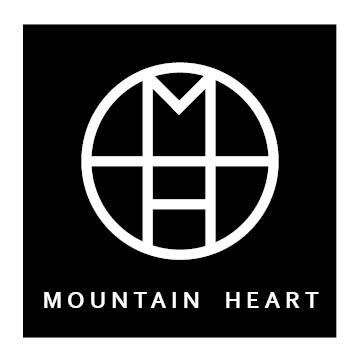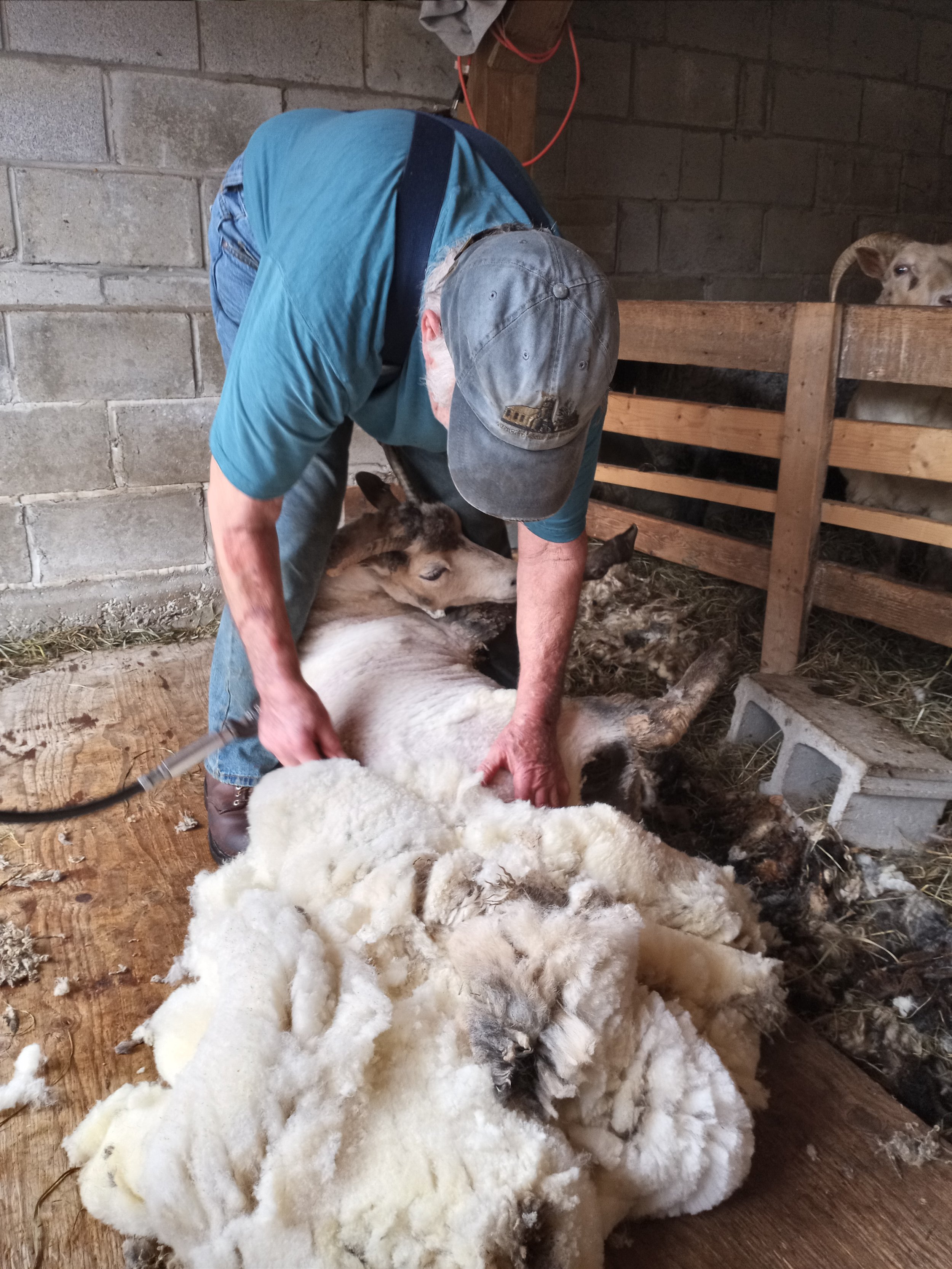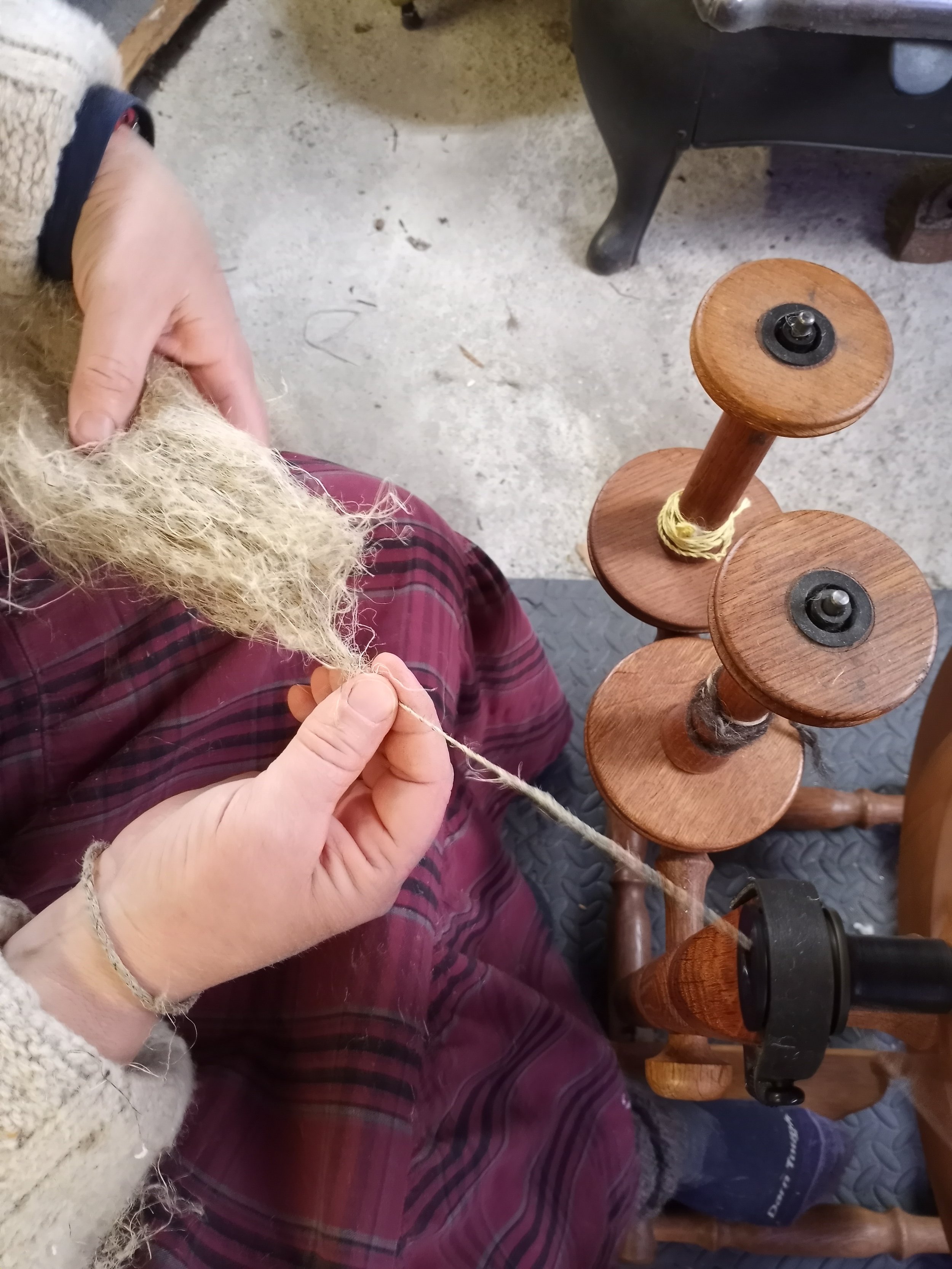Springtime: sheep shearing, spinning, and planting season
A couple weeks after the heavy snow, springtime has come.
Spring has arrived in earnest and we completed the process of sheep shearing several weeks ago. The weather was rainy in the days leading up to our April 15 shearing date, and I closed the entire flock (40 sheep) into the barns a couple of days before our shearer, Fred Depaul, arrived. Everyone was a bit damp despite my efforts, and in the week after the sheep got their haircuts, I spread the fleeces out in the sun to finish drying.
Iris, a freshly shorn Icelandic sheep, looking a bit sandwiched between Ergo and Facto, two of my Romney ewes.
The legendary Fred Depaul finishes our day with a haircut for Rose, an Icelandic X Shetland ewe.
I found that I had an unusually high amount of felted wool on some of the fleeces this spring, which I suspect was caused by the record-breaking wet summer we had in Vermont last year. Still, a lot of beautiful wool, including the fleeces from the ewe lambs born last spring. I typically send about a hundred pounds of wool off to the mill I work with to be processed into roving in yarn (in recent years I have worked with Battenkill Fibers and the Junction Fiber Mill for processing), but I still have quite a bit of inventory left from last year’s clip, so I’m hoping to sell more of the 2024 fleeces as raw wool.
Skirting a Shetland lamb’s wool. Below, a full fleece on the skirting table.
The grass is finally growing here, and the flock is looking forward to getting onto fresh greenery for the season. The change in rhythm is welcome, as the farmwork shifts from interior projects and the barns to outdoor landscape and planting tasks.
As winter receded and spring began, I hand spun a number of hemp fiber samples for my friend and colleague, Laura Sullivan, in support of her hemp research at the University of Vermont. These samples represent plots grown with different seeding rates and harvest dates, and I spun both line and tow fibers. It felt great to take a deeper dive into these materials, as it dovetails with my own fiber hemp research work, just getting underway. For more about Laura’s very interesting work, check her out on Instagram at @hempfiber.artistfarmer.
Spinning carded hemp tow.
Hemp tow fibers hand processed on a drum carder.
Some of the samples after scouring and re-skeining.
Detail of a handspun hemp yarn.
I have been busy getting processing/work spaces ready for my own research work here at the farm. I have raw and retted fiber (both hemp and flax) left from the crops I grew last year at Smokey House Center. I have moved some of this material into one of my barns here at Mountain Heart, and a bunch of last year’s Bialobreszkie and Futura 83 hemp is presently retting in a tank and on the grass around the farmhouse. The second floor of my small barn is a seasonal workspace where I have spinning equipment and several of my looms.
Retted samples from last year’s crops awaiting further processing.
Setting up the summer studio. I have seven looms set up at the moment, but I’m the only weaver. I should try to remedy this!
Outside, we’ve been preparing my little research field for planting. This field is about .25 acre/11,000 square feet, and has been used as pasture for the sheep for the past four years. I will continue to give the sheep access to this field during the winter, so we are creating fencing that will permit this. Given its small size, we prepped the field by first raking/forking up areas where there was a thick layer of fallen hay, and then ran a heavy rototiller over it. We will till it once more before planting it, which I am hoping will happen during the week of May 13, weather and seed shipments permitting.
Fieldwork in progress. A portion of the field at the right of the image is not in use this season, as a new septic drainfield will be installed later this summer.
I’ll be planting fiber hemp, flax, indigo, and broom corn in this field in 2024. The hemp varieties include Futura 83 and Bialobreszkie, being grown for UVM’s ongoing research work. My SARE grant is focused on dioecious varieties (with roughly equal numbers of male and female plants in a population), because I want to better understand the potential for obtaining fine, long line fiber from the male plants, and will be harvesting them separately from the female plants.
It’s been a challenge sourcing small quantities of dioecious seed. A lot of current industrial hemp research emphasizes plants with a lot of biomass (heavier stems, very tall, and feminized or monoecious crops), which is not necessarily what I am interested in exploring (in a future blog post, I’ll try to talk a bit more about what I’ve been reading about historic hemp linen production in Europe and Asia, and provide some links to online sources for more information).
I will be planting Carmenecta hemp from King’s Agriseed, Tiborszallasi from Northeast Heritage, and a variety called “Zaki” from the USDA Germplasm Bank housed at Cornell.
The indigo is also part of my grant project, as I will be using it for side-by-side comparisons of the effects of using retting water for irrigation. The broom corn is being planted as part of my rotational plan for this small field. Also, I love ornamental broom and broom-making!
My primary flax plot (about a 30’ x 60’ plot this year) will be Avian. I have smaller quantities of other varieties I am growing out for seed, including Linore, Callista, Melina, and Lisette.
I am hoping to plant all of these crops with a new seeder I acquired this spring, A Jang JP-1 single row seeder. I’m aware of others using this seeder successfully with flax seed, and I’m hoping that it will also work for hemp. I just used the word “hope” twice in as many sentences - that seems both like a good place to stop writing, and an expression of every farmer and gardener’s state of mind in springtime.
The handsome Jang seeder.
Ready for action.














